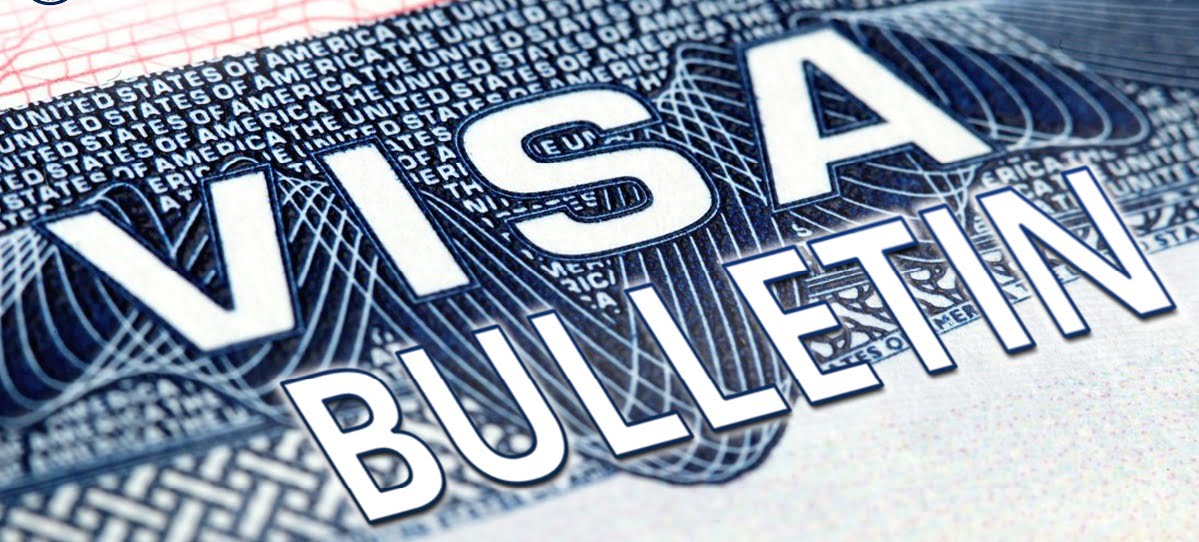Annually, over a million students worldwide pursue higher education at American colleges and universities. Optional Practical Training (OPT) allows these graduates to acquire practical experience and apply their knowledge and skills within the U.S. promptly.
Without OPT, most international graduates would be compelled to leave the country and utilize their talents to benefit global competitors.
Safeguarding OPT access for international graduates is crucial for attracting, educating, and retaining top talent from across the globe.
Optional Practical Training (OPT) offers an excellent opportunity for international students to gain practical experience and start their job search in the United States. OPT enables students to acquire hands-on experience and establish connections with potential employers.
OPT is a program initiated by USCIS, which allows international students with F-1 visas to work in the United States for up to 12 months during or after completing their degree.
To maintain their immigration status, F-1 OPT visa students must adhere to various requirements. This blog will outline the essential do’s and don’ts that OPT students should follow diligently.
OPT: The International Student Gateway to U.S. Job Market
Obtaining a green card for international graduates who wish to live and work in the U.S. permanently is a highly challenging process.
The F-1 student visa does not permit “dual intent,” which means that immigrants cannot enter the U.S. on an F-1 visa to stay permanently after their studies. Instead, they must apply for a different visa once their studies are completed.
Upon their F-1 student status expiration, graduates may seek an employer to sponsor them for a green card or a temporary skilled work visa, such as:
H-1B visa: a nonimmigrant visa that enables American employers to recruit foreign workers with specific expertise to work in the United States for a particular duration. The H-1B visa is usually reserved for professions in areas such as technology, finance, engineering, architecture, and others that meet the criteria.
O-1 visa: a nonimmigrant visa granted to individuals who have demonstrated extraordinary ability and have reached the top of their profession, regardless of whether they work in the fields of business, science, education, art, or athletics.
However, even when employers are willing to sponsor a recent graduate for a green card, extensive backlogs often complicate the process. As a result, the H-1B temporary work visa or O-1 visa frequently becomes the sole viable option.
Essential Guidelines for F-1 OPT Visa Students: Navigating Your Journey
Upon completing your degree, it is crucial to note that you cannot engage in any on-campus or off-campus employment until you have received your Employment Authorization Document (EAD) and the specified start date has arrived. This restriction applies even if your USCIS case status indicates your application has been approved.
An Employment Authorization Document (EAD) serves as tangible proof that an individual has the authorization to work in the United States. Obtaining an OPT EAD card grants individuals such as F-1 visa students the legal right to work while participating in OPT.
F-1 OPT visa holders must abide by the 90-day unemployment provision. This provision mandates that if you cannot secure employment within 90 days of commencing your OPT, you must either apply for a status change or prepare to leave the United States.
This regulation ensures that OPT students actively seek employment and do not use their OPT as an opportunity to remain in the U.S. without gainful employment.
It is essential to note that your OPT EAD card’s validity cannot extend beyond your visa’s validity. Therefore, renewing your EAD status periodically is crucial to ensure continued authorization to work in the U.S.
Employment must directly correlate to the F-1 student’s field of study. Thus, confirming that any potential employment opportunities align with your field of study is necessary before accepting any job offers.
Failure to comply with this requirement may result in a violation of your OPT status. Therefore, it is essential to strategize and plan accordingly to maintain your F-1 status.
STEM OPT: Extension Overview
The STEM OPT Extension offers a significant advantage to students by allowing them to acquire an extra 24 months of practical work experience.
This extension, specifically designed for F-1 OPT visa holders in the United States, ultimately allows for a total visa duration of 36 months.
Students can take advantage of the STEM Extension if they fulfill the following requirements:
- Possessing a valid F-1 OPT visa for post-completion and maintaining a valid F-1 status;
- Having earned a bachelor’s, master’s, or Ph.D. degree in an eligible STEM field (science, technology, engineering, or mathematics) from a SEVP-certified school;
- Being employed for a minimum of 20 hours per week in a paid position directly related to the student’s field of study;
- Working for an employer enrolled in the government’s E-Verify employment verification program;
- Not exceeding 90 days of unemployment during the post-completion OPT period and ensuring this limit is not surpassed before beginning the STEM OPT Extension.
Students granted the STEM OPT Extension are permitted an extra 60 days of unemployment, resulting in a cumulative total of 150 days of allowable unemployment throughout their entire post-completion OPT period. This additional allowance gives them more job search and career development flexibility.
For more information on OPT eligibility, the OPT application process, and STEM extension, read the article “Tips for Optional Practical Training – OPT employment for F-1 international students.”
Do’s and Don’ts for International Students to Maintain F-1 OPT Visa Status
There are crucial steps every student on OPT should follow to uphold their immigration status, as well as some actions to steer clear of during the F-1 OPT visa period. Crucial steps to maintain immigration status.
Do’s
- Report any address changes or employment status changes to your designated school official (DSO) within 10 days.
- Maintain a valid, unexpired Form I-20, endorsed by your DSO every 6 months.
- Maintain employment that is directly related to your field of study.
- Maintain a minimum of 20 hours of work per week.
- When changing jobs during the STEM OPT Extension or having multiple employers, ensure each employer completes and submits a new Form I-983.
- Keep track of your EAD card expiration date and apply for a renewal at least 90 days before it expires.
- Make sure to file taxes annually and on time.
- Utilize your F-1 OPT visa duration to secure an employer open to sponsoring you for an H-1B visa or another suitable visa type.
- Enhance your technical skills and capitalize on numerous job opportunities to prevent exceeding the allowed unemployment timeframe – internship or volunteer work is allowed to prevent accumulating unemployment.
Don’ts – Actions to avoid during the F-1 OPT visa period
- Do not engage in unauthorized work or employment outside your field of study.
- Do not exceed 90 days of unemployment.
- Do not work without obtaining an Employment Authorization Document (EAD).
- Do not engage in off-campus employment while holding an F-1 OPT visa.
- Do not work for an employer not enrolled in the E-Verify program during your OPT STEM Extension.
- Do not transfer schools without consulting your DSO and obtaining a new Form I-20.
- Do not overstay your OPT period without applying for an extension or changing your visa status.
- Do not commit any criminal activities that could result in deportation.
By following these crucial steps and avoiding negative actions, students on OPT can maintain their immigration status and continue to pursue their career goals in the United States.
Key Factors F-1 OPT Students Need to Know to Prevent Violating Their Visa Status
As you can now comprehend, maintaining consistent employment status is the most critical aspect of retaining your F-1 OPT visa and OPT STEM Extension.
Many students face challenges securing stable employment in the job market and may attend interviews without adequate preparation.
This approach could lead to a significant problem as many companies use applicant tracking software, which can keep track of your prior activities and reject your application multiple times, ultimately resulting in your application getting blacklisted.
Losing your F-1 OPT visa status becomes a real possibility under such circumstances. Therefore, preparing yourself thoroughly for each interview and applying for jobs that align with your career objectives is crucial, increasing your chances of getting hired and maintaining your visa status.
Recent graduates face job rejections due to lacking the necessary technical skills, knowledge, and real-time practical experience. There are several things to consider when seeking a stable job to prevent slipping into such a situation.
Firstly, acquiring appropriate technical training before attending interviews is crucial. This training can equip you with practical knowledge of the required technologies and distinguish you from other applicants. Since companies seek candidates with practical experience with the latest technologies, obtaining the proper training beforehand is essential.
Secondly, obtaining technical skills to excel in a fiercely competitive job market is crucial. Adapting to market trends is essential for survival in such a job market. Acquiring skills in high-demand technologies like Java, Python, AWS, MERN Stack, Machine Learning, and Artificial Intelligence can improve your likelihood of landing a well-paying job. By mastering these technologies, you can showcase your competencies to potential employers and distinguish yourself from other job seekers.
Lastly, consider seeking help from professionals to assist you in preparing for interviews and provide valuable feedback on enhancing your interview skills. Furthermore, they can facilitate access to job opportunities consistent with your career objectives and technical proficiencies.
Implementing these strategies can help you acquire the necessary technical skills, knowledge, and practical experience that companies are looking for and ultimately increase your chances of getting hired for a stable job.
Conclusion
In conclusion, obtaining an F-1 OPT visa status is a lengthy and rigorous process, but the real challenge is to sustain that status by adhering to USCIS guidelines.
One of the most critical factors in maintaining this status is to stay employed. Acquiring in-demand skills can help you achieve stable employment and unlock many career advancement opportunities.
The technology sector offers an abundance of job prospects, ensuring that you will always have employment options and can maintain your F-1 OPT visa status.
* This article is for informational purposes only and does not provide direct legal advice.
If you would like to discuss your immigration situation, brainstorm, or better understand how we can assist you, please write here.
FAQ:
What is the F-1 OPT program?
The OPT program is a federal initiative managed by the United States Citizenship and Immigration Services (USCIS), which permits international students holding an F-1 visa to work in the United States. OPT students can work in a job relevant to their study area for up to 12 months, putting their academic knowledge into practical use. This program is significant for science, technology, engineering, and math (STEM) students.What are the basic regulations of the OPT program?
To qualify for OPT participation, specific requirements must be met. Firstly, the participant must be an international student holding an F-1 visa. Additionally, they must have finished at least one year of full-time academic studies at a university, college, conservatory, or seminary. It is essential to note that participants must be enrolled in something other than English as a Second Language (ESL) degree program. The proposed OPT employment must be directly related to the participant’s study area, and OPT time must be available at their current academic level. Moreover, participants cannot be approved for or have completed 12 months or more of full-time Curricular Practical Training (CPT). These criteria must be met for an individual to be considered eligible for OPT participation.What is the application process for F-1 OPT, and when should I start it?
Applying for the Optional Practical Training program consists of several steps. Firstly, participants must submit the required OPT application materials to the designated OPT official at their school. These officials enter the request into the Student and Exchange Visitor Program’s SEVIS system. Subsequently, participants and school officials must submit Form I-20 and Form I-765 (Application for Employment Authorization) to the United States Citizenship and Immigration Services (USCIS) within 30 days. Upon approval of the OPT application, participants receive an Employment Authorization Document (EAD) and an authorization date to begin work. It is essential to note that candidates for post-completion OPT can apply 90 days before graduation and by 60 days after graduation.What are the most viable visa alternatives for staying in the United States post-completion of an OPT program?
Upon their F-1 student status expires, graduates may seek an employer to sponsor them for a green card or a temporary skilled work visa, such as the H-1B or O-1.What is the OPT 90-day unemployment regulation?
The OPT 90-day unemployment regulation requires F-1 OPT visa holders to adhere to a provision that limits their unemployment to 90 days. If they cannot find employment within this period, they must either apply for a status change or prepare to leave the United States. This rule ensures that OPT students are actively seeking employment and not misusing the program to stay in the U.S. without meaningful work.What is the difference in unemployment regulation between regular OPT and STEM OPT students?
STEM OPT students are allowed an additional 60 days of unemployment, making their total cumulative unemployment period 150 days for their post-completion OPT. This rule enables STEM OPT students to seek employment and explore different career paths.









